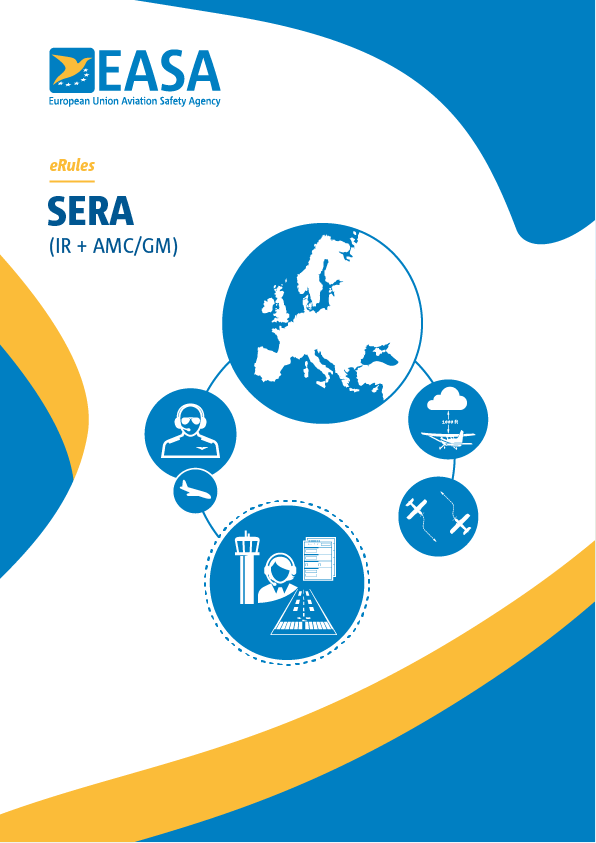SERA.3101 Negligent or reckless operation of aircraft
Regulation (EU) No 923/2012
An aircraft shall not be operated in a negligent or reckless manner so as to endanger life or property of others.
Regulation (EU) No 923/2012
Except when necessary for take-off or landing, or except by permission from the competent authority, aircraft shall not be flown over the congested areas of cities, towns or settlements or over an open-air assembly of persons, unless at such a height as will permit, in the event of an emergency arising, a landing to be made without undue hazard to persons or property on the surface. The minimum heights for VFR flights shall be those specified in SERA.5005(f) and minimum levels for IFR flights shall be those specified in SERA.5015(b).
ED Decision 2013/013/R
MINIMUM HEIGHTS ESTABLISHED BY THE COMPETENT AUTHORITY ABOVE THE REQUIRED MINIMUM HEIGHTS
In cases where it is considered that the minimum heights specified in SERA.5005 and SERA.5015 are not sufficient, the competent authority may establish appropriate structures, such as controlled, restricted or prohibited airspace, and define specific conditions through national arrangements. In all cases, the related Aeronautical Information Publication (AIP) and charts should be made easy to comprehend for airspace users.
ED Decision 2013/013/R
MINIMUM HEIGHTS PERMITTED BY THE COMPETENT AUTHORITY BELOW THE REQUIRED MINIMUM HEIGHTS
The permission from the competent authority to fly at lower levels than those stipulated in SERA.5005(f) and SERA.5015(b) may be granted either as a general exception for unlimited number of cases or for a specific flight upon specific request. The competent authority is responsible for ensuring that the level of safety resulting from such permission is acceptable.
ED Decision 2024/007/R
TERMS ‘TAKE-OFF’ AND ‘LANDING’
In the context of point SERA.3105, the terms ‘take-off’ and ‘landing’ include operations such as touch-and-go, go-around or missed approach performed at an aerodrome or operating site for which the necessary obstacle clearance assessment was conducted and approved by the relevant competent authority(ies).
Regulation (EU) No 923/2012
The cruising levels at which a flight or a portion of a flight is to be conducted shall be in terms of:
(a) flight levels, for flights at or above the lowest usable flight level or, where applicable, above the transition altitude;
(b) altitudes, for flights below the lowest usable flight level or, where applicable, at or below the transition altitude.
SERA.3115 Dropping or spraying
Regulation (EU) No 923/2012
Dropping or spraying from an aircraft in flight shall only be conducted in accordance with:
(a) Union legislation or, where applicable, national legislation for aircraft operations regulated by Member States; and
(b) as indicated by any relevant information, advice and/or clearance from the appropriate air traffic services unit.
Regulation (EU) No 923/2012
An aircraft or other object shall only be towed by an aircraft in accordance with:
(a) Union legislation or, where applicable, national legislation for aircraft operations regulated by Member States; and
(b) as indicated by any relevant information, advice and/or clearance from the appropriate air traffic services unit.
Regulation (EU) No 923/2012
Parachute descents, other than emergency descents, shall only be made in accordance with:
(a) Union legislation or, where applicable, national legislation for aircraft operations regulated by Member States; and
(b) as indicated by any relevant information, advice and/or clearance from the appropriate air traffic services unit.
Regulation (EU) No 923/2012
Aerobatic flights shall only be carried out in accordance with:
(a) Union legislation or, where applicable, national legislation for aircraft operations regulated by Member States; and
(b) as indicated by any relevant information, advice and/or clearance from the appropriate air traffic services unit.
Regulation (EU) No 923/2012
Aircraft shall not be flown in formation except by pre-arrangement among the pilots-in-command of the aircraft taking part in the flight and, for formation flight in controlled airspace, in accordance with the conditions prescribed by the competent authority. These conditions shall include the following:
(a) one of the pilots-in-command shall be designated as the flight leader;
(b) the formation operates as a single aircraft with regard to navigation and position reporting;
(c) separation between aircraft in the flight shall be the responsibility of the flight leader and the pilots-in-command of the other aircraft in the flight and shall include periods of transition when aircraft are manoeuvring to attain their own separation within the formation and during join-up and breakaway; and
(d) for State aircraft a maximum lateral, longitudinal and vertical distance between each aircraft and the flight leader in accordance with the Chicago Convention. For other than State aircraft a distance not exceeding 1 km (0,5 nm) laterally and longitudinally and 30 m (100 ft) vertically from the flight leader shall be maintained by each aircraft.
SERA.3140 Unmanned free balloons
Regulation (EU) No 923/2012
An unmanned free balloon shall be operated in such a manner as to minimise hazards to persons, property or other aircraft and in accordance with the conditions specified in Appendix 2.
SERA.3145 Prohibited areas and restricted areas
Regulation (EU) No 923/2012
Aircraft shall not be flown in a prohibited area, or in a restricted area, the particulars of which have been duly published, except in accordance with the conditions of the restrictions or by permission of the Member State over whose territory the areas are established.
